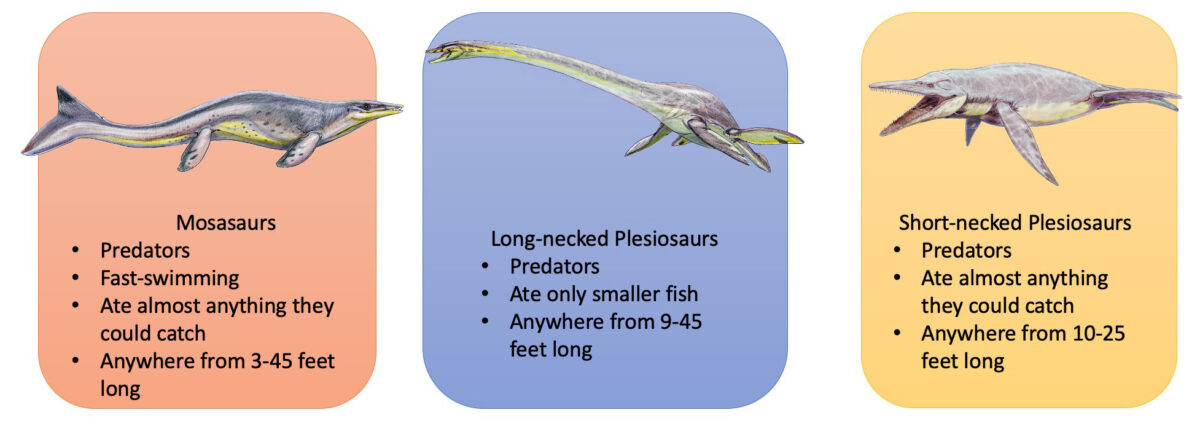Authors: Gavin Davidson, Emily Berry, Kayleigh Johnson, and Laurie C. Anderson, South Dakota School of Mines and Technology.
Grades: Middle School.
Alignment: Next Generation Science Standards (MS-LS2-2, MS-LS2-5, MS-ESS1-4)
Objective: Students will be able to investigate the food web of the Cretaceous Western Interior Seaway. Students will be able to compare and contrast land and ocean ecosystems.
Assessment: How will we know if students are successful?
- Students will have completed a food web and have the ability to trace the flow of energy from producer to consumer.
- Marine food webs rely on phytoplankton as their primary producers, and support more kinds of predatory animals than terrestrial ecosystems do. They are similar in that their energy all comes from the Sun.
Key Points: What does the teacher need to know to teach this lesson?
- Food web lessons that have been discussed in classes prior to this can be applied to ancient ecosystems as well as modern ones.
- For around 50 million years (113-66 million years ago) in the Cretaceous period, the center of North America was covered by a shallow, warm-water ocean that was home to the large marine reptiles of the Mesozoic.
- At first students will assume that land-based producers are the same as marine producers. This isn’t correct, so expect to be correcting this (there are slides in the associated PowerPoint for this).
Download Files:
Lesson plan: PDF (421 KB) Word (3.2 MB)
Worksheet (blank): PDF (253 KB) Word (1.3 MB)
Worksheet (completed): PDF (312 KB) Word (1.4 MB)
Presentation: Powerpoint (24.5 MB)



